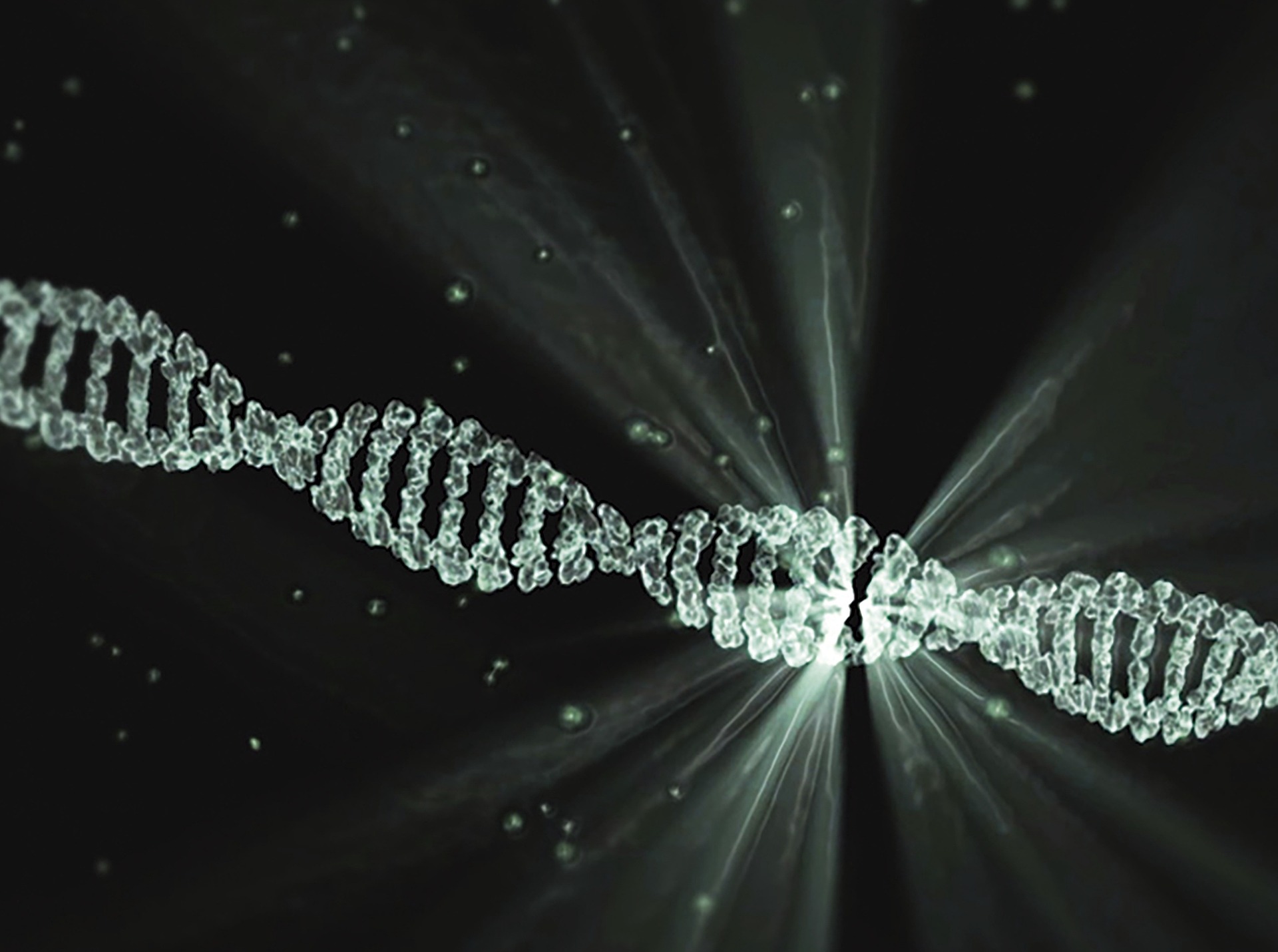Could the cellular mechanisms that cause sunburns help creating more stable therapeutics? Studying the effect of ultraviolet light on strands of DNA put together in various structures, we have discovered that gentle irradiation could protect the DNA from being degraded. This overcomes a major hurdle for translation into clinics without requiring extensive modifications.
Views 2957
Reading time 3 min
published on Apr 26, 2023
A bright, sunny summer day, no sunscreen, and there it is: you got a sunburn. On their way to self-destruction, your skin cells’ DNA has been damaged by the solar ultraviolet (UV) light. Absorbing UV, some DNA bases undergo a chemical reaction, called photocyclization, linking them together. These products are not well tolerated by the cellular machinery and prevent safe DNA replication, ultimately leading to the painful, warm redness you feel. On the other hand, countless potentially game-changing therapeutics are based on nucleic acids such as DNA but face a lack of stability in biological media that restricts their translation from research to clinics. Instead of sunburn-level photocyclizations, a hypothetical light tan – namely, controlled photocyclizations at desired positions – could protect DNA-based drugs from degradation and realize their full potential.
In a recent study, our group investigated the effect of UV irradiation on the stability and function of a DNA strand appended with multiple thymines, bases that undergo photocyclizations the most. We used strong UV-B light, similar to that of sunlight, and soft, filtered UV-f, that should induce less damage, and looked at how this affected the lifetime of a random DNA sequence with various number of thymines. Both methods showed good protection against degradation by enzymes, photocyclizations preventing the strands from being eaten up. However, UV-B showed higher levels of internal strand degradation, the DNA gradually losing the ability to hybridize with its complementary strand and form double helices. This ability to form so-called duplexes can be used for therapeutic purposes: a DNA sequence matching a specific messenger RNA can provoke the cells into destroying this mRNA, preventing it to be translated into the corresponding protein. Because a lot of diseases involve dysregulated protein levels and cannot be targeted by classical therapeutics, this technology promises to fill a gap, if the DNA used can be stable long enough. When protecting such a DNA strand with multiple thymines and mild UV irradiation, not only did it gain stability, but it also retained this ability to stop protein translation.
Another large field of DNA research takes the DNA molecule out of its genetic context and uses it as a material to create all kind of three-dimensional shapes on the nanometer scale. For over four decades, scientists have taken advantage of the programmability of DNA base pairing, which usually stores genetic information, to assemble nanotubes, nanocubes, nano-smiley faces, … Aptamers, for example, are short DNA sequences that fold in three dimensions, tailored to specifically bind a target. We selected an aptamer rich in thymines, designed to bind a model protein, thrombin. Adding an extra four thymines at the ends and shining low-energy UV light on it did not impair the aptamer ability to fold into its 3D shape. When we measured the binding of the irradiated structures to thrombin, it did not lose any binding ability, showing that we doe not significantly impair the aptamer’s function.
Finally, we wanted to know if our method could be used on quite large DNA nanostructures. Based on previous work from our group, we assembled a nanocube from only a few DNA strands, previously protected with mild UV light. This cube still assembled as expected and showed much higher stability towards enzyme degradation. We then added a bunch of extra thymines on a non-modified cube at precise positions so that they face each other on different strands. This way, if photocyclization occurs between them, they would link the two strands they are attached to. Have this happen at every corner of the cube, and you can “freeze” all of the DNA strands together, creating a single molecule with a precise and very large three-dimensional shape. We found that this happens when we used strong UV-B light, although it requires long irradiation times which can damage DNA, and leaves room for improvement, but is nonetheless a great achievement. Overall, the simplicity and versatility of our method promises exciting further developments.
These two different methods – the light tanning and sunburn – to induce controlled or uncontrolled photocyclizations on DNA allow for more stable DNA therapeutics, so far the main limitation of the field. On the long run, this could pave the way for more personalized medicine and allow access to potential treatments for previously uncurable diseases. Stabilizing DNA nanostructures, they could be used to deliver therapeutics in specific cells and highly reduce the risk of side effects, or a diagnosis tools. We hope this simple and inexpensive methods bridges some of the gap between fundamental research and its translation in clinics.
Original Article:
Tyler M. Brown, Hassan H. Fakih, Daniel Saliba, Jathavan Asohan, Hanadi F. Sleiman, J. Am. Chem. Soc. 2023, in press, https://doi.org/10.1021/jacs.2c08808
 Maths, Physics & Chemistry
Maths, Physics & Chemistry



